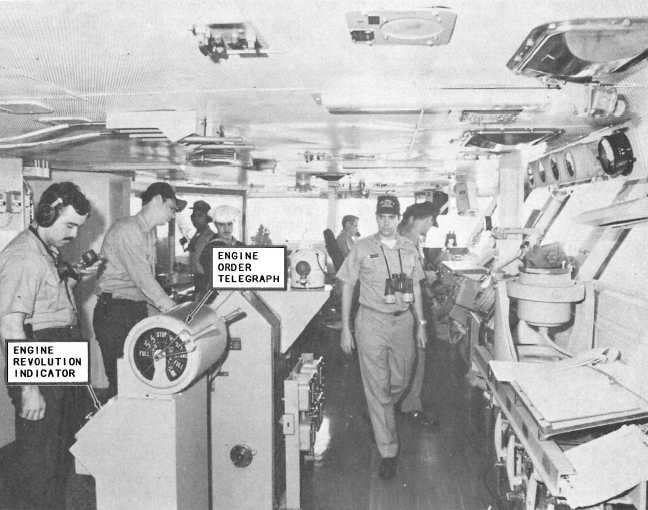| |
to an electrical signal. This electrical signal is then
transmitted to the steering engine, usually located
near the stern of the ship. Here the electrical
signal is received by the steering engine, where it
is converted to a mechanical input to move the
rudder. The movement of the rudder causes the
ship to move in the desired direction.
The ship is normally steered from the helm on
the bridge. If that part of the ship should sustain
any kind of damage, the steering can be shifted to
other locations, such as after steering.
LEE HELM
The lee helm of a ship could be compared to the
gas pedal of a car. The lee helm, which can be seen
in figure 18-5, is actually two instruments in
one—the engine-order telegraph and the engine-
revolution indicator.
Engine-Order Telegraph
The engine-order telegraph communicates
speed orders to the engine room. It has duplicate
dials divided into sectors for flank, full, standard,
2/3, and 1/3 speed ahead and 1/3, 2/3, and full
speed back. A hand lever fitted with an indicator
travels over the circumference of the circular face
of the instrument. When the handle is moved to
the required speed sector, the engine room com-
plies with the order immediately. The engine room
notifies the bridge that it has complied with the
134.54
Figure 18-5.-An interior view of the bridge of USS Dwight D. Eisenhower (CVN-69). The box-like
console in the left foreground of the figure is the lee helm; it includes the engine-order
telegraph, which is the cylinder-shaped component, fitted with a hand lever, showing a
circular-faced dial divided into sectors.
18-5
|

